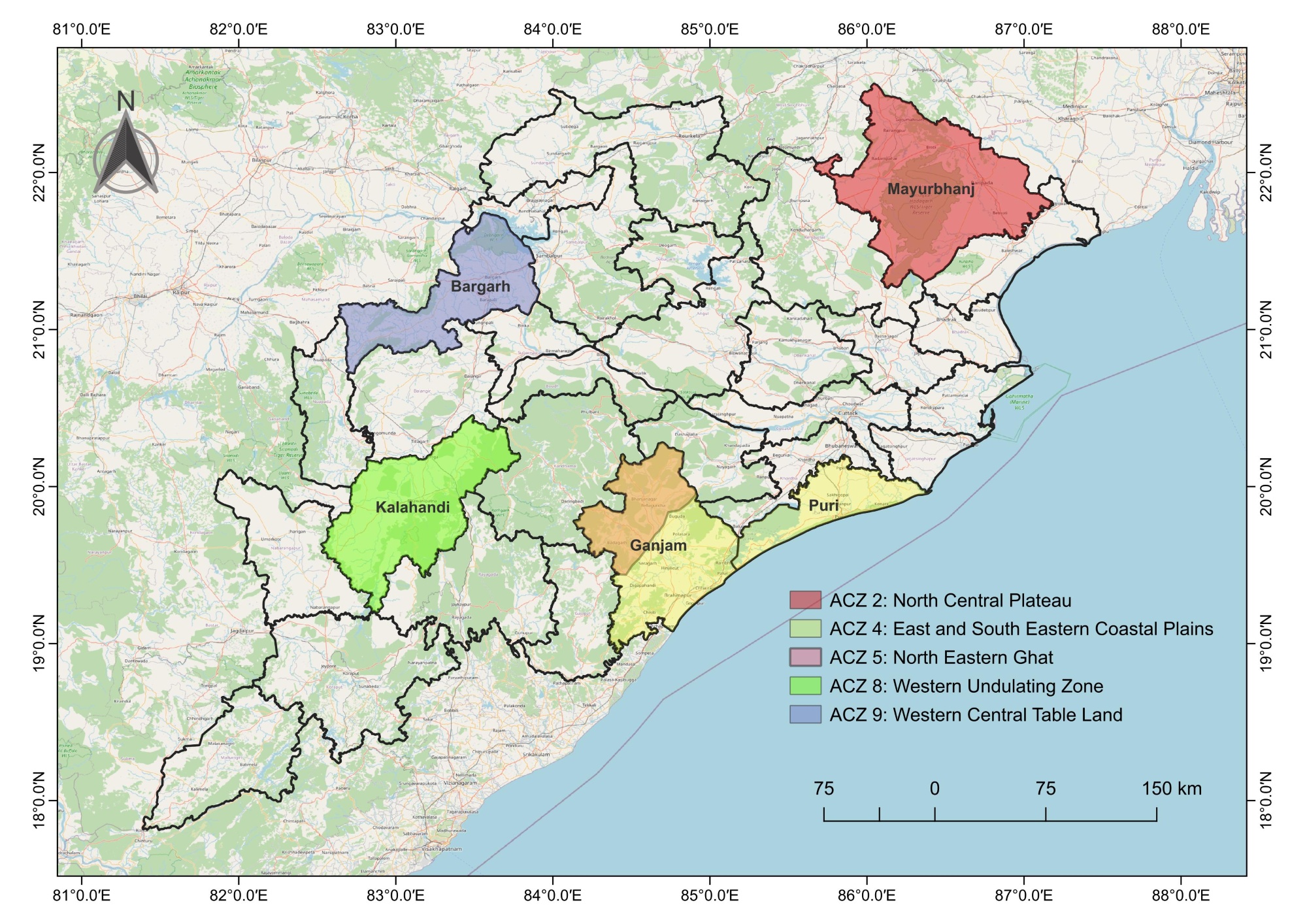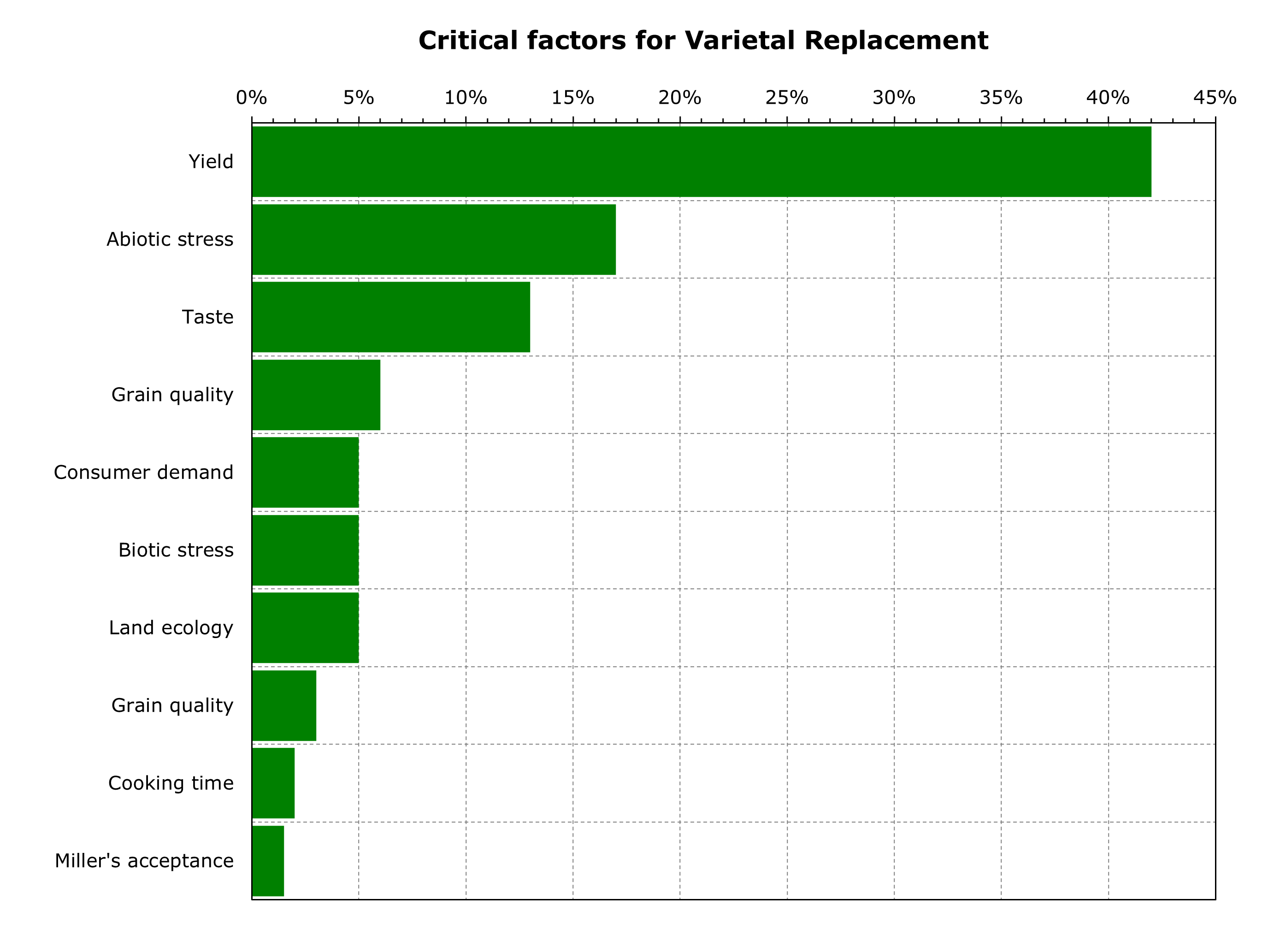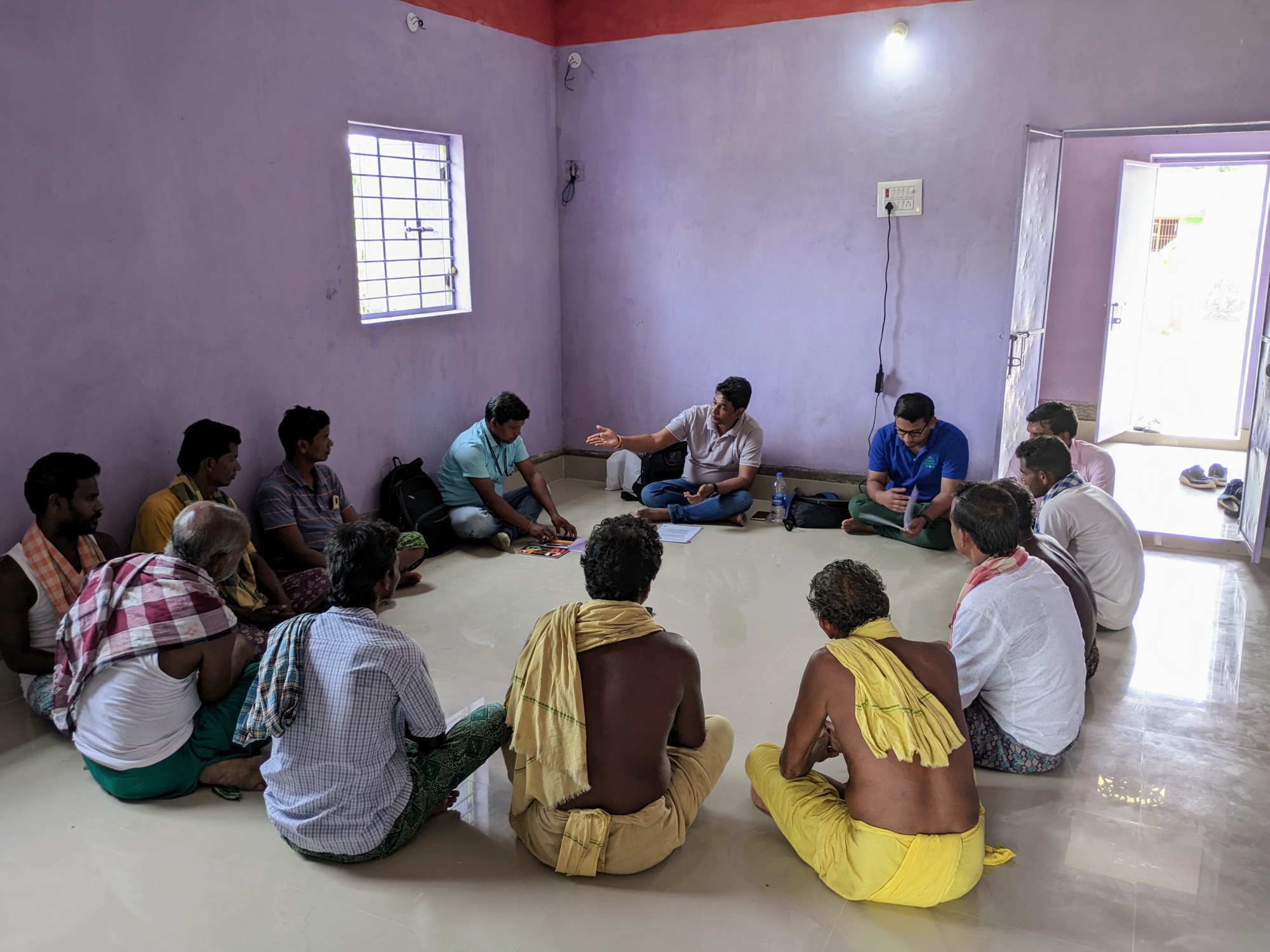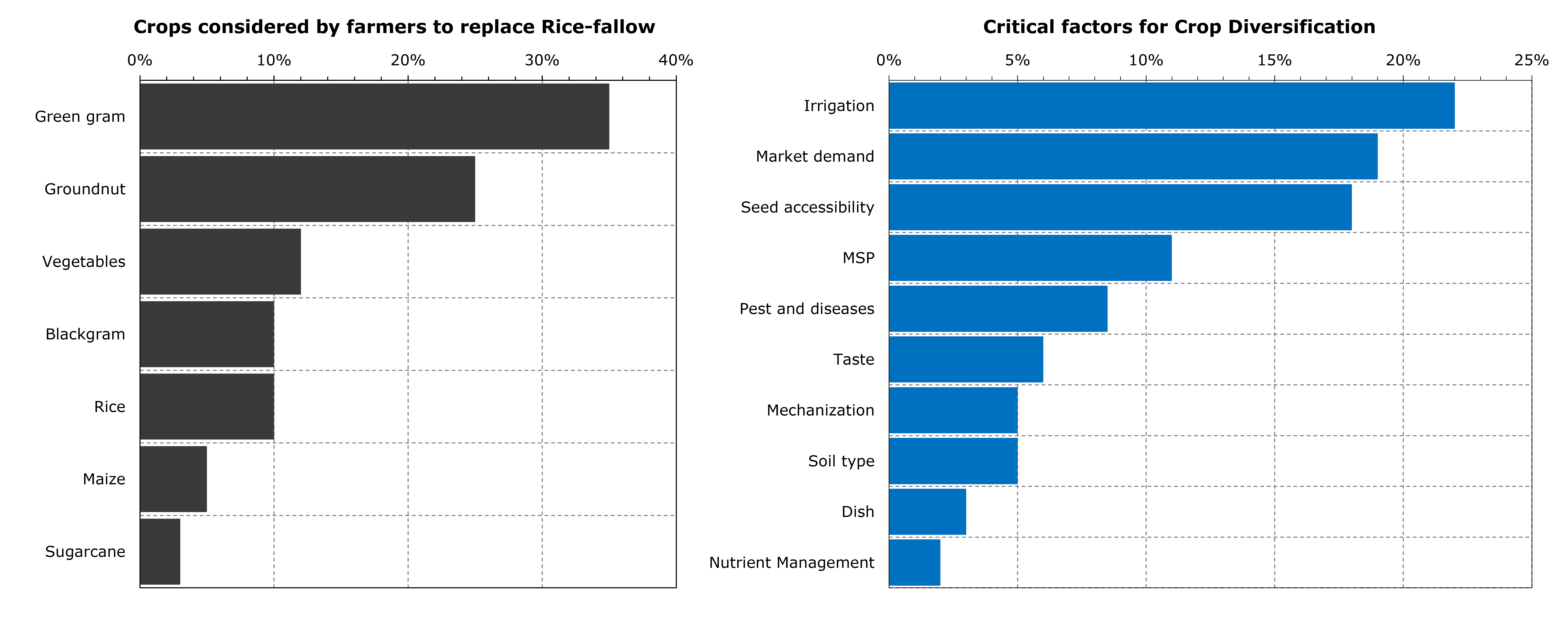
Odisha, an eastern Indian state, faces a dual challenge of climate variability and low agricultural productivity, primarily due to rice monocropping. Rice dominates over 65% of the cultivated land, yet yields only 2.3 tonnes per hectare—well below the national average of 2.8 tonnes per hectare. This productivity gap stems from low seed replacement rates, limited varietal turnover, and subsistence farming practices. Compounding these challenges, approximately 59% of wet-season rice areas, spanning 2.1 million hectares, remain fallow during the dry season. Of this, nearly half is deemed suitable for cultivating short-duration pulses and oilseeds. This article explores how small and marginal farmers in Odisha (Figure 1), constrained by limited resources and traditional practices, are navigating these challenges It highlights opportunities for change through varietal replacement and crop diversification, emphasizing the potential to enhance productivity and resilience in Odisha’s agricultural landscape.

In Odisha, small and marginal farmers form the backbone of agriculture, yet their limited resources restrict risk-taking. Rice cultivation depends heavily on old varieties, such as MTU7029 (Swarna), which have dominated for over 25 years. While reliable, these mega varieties struggle to address emerging challenges like abiotic stress, declining soil health, and shifting market demands. As Mohit Kumar Sahu, a farmer from Bargarh, notes, “Swarna Masuri is the best variety… it is high yielding, has very few broken grains, and is delicious to eat.” However, reliance on these varieties highlights the need for improved alternatives that can withstand climatic and market shifts.
Compounding this issue is the vast expanse of rice-fallow land. Farmers frequently cite water scarcity as a critical barrier to year-round cultivation. As Haradhan Pradhan of Bargarh explains, “There is no problem with rice variety… water is the main problem here. There is a canal present, but it does not get water to every land.” This underscores the potential for cultivating short-duration pulses and oilseeds like green gram and groundnut, provided irrigation and tailored agronomic practices are introduced.
Table 1: Crop varieties and salient features
| Crops | Suitability criteria | ||
| Agronomic | Post Harvest | Consumption | |
| Rice | Yield, abiotic (drought, submergence, salinity, etc.), and biotic resistance (sheath rot, blast, sheath blight, weeds, leaf hopper, etc.) land ecology, variety duration. | Medium slender grains, good straw quality, fewer broken grains, etc. | Taste, market demand, cooking time. |
| Green gram | Yield, short duration, less irrigation requirement. | – | Taste |
| Groundnut | Yield, salinity tolerance, short duration, drought tolerance. | – | Taste |
What defines an ‘Improved variety’ for farmers?
Adopting new agricultural technologies often follows stages: knowledge, persuasion, decision, implementation, and confirmation. However, knowledge gaps can deter farmers from embracing innovations, as perceived risks often outweigh potential benefits. Under the One CGIAR Initiative on Market Intelligence, Focus Group Discussions (FGDs) and Semi-Structured Interviews (SSIs) assessed farmers’ varietal preferences and identified barriers to adoption (Table 1). From a production perspective, farmers prioritize yield, drought tolerance, and stress resistance. Post-harvest traits, such as grain quality and storability, also play a crucial role (Figure 2). For consumption, taste, cooking time, and market demand drive preferences.



Crop diversification: A Promising but Challenging Patch
Effective crop diversification or rice-fallow management is possible when different crops are cultivated across the seasons. Cultivation during the Rabi season requires either adequate irrigation or at least sufficient residual soil moisture after the rice crop to avoid crop failure. Water scarcity remains a recurring theme. Rajkishor Sahu from Bargarh articulates this challenge: “The main factor is water. If water is available, every farming is easy; otherwise, all crops are difficult… I think only 10% of farmers have access to water in the Rabi season by borewell.” Additionally, market demand, timely access to seeds, crop duration, price sensitivity, soil type suitability, pest and disease resistance, knowledge of mechanization, and nutrient management were found to be key factors that influence crop cultivation decisions (Figure 5). Despite such constraints, many farmers aspire to diversify. Crops like green gram, groundnut, and black gram are favored for their low water requirements and suitability for local soil conditions. As Pratap Kr. Nayak from Puri shares, “After I use DSR, I do not have to worry about rice… in Rabi, I cultivate vegetables for good business… we can cultivate pulses or nuts, but it should be short duration.” Green gram (Desi) and Black gram (T9) are primarily chosen for household consumption due to their taste preferences. Groundnut varieties such as K-1224 and ICGV 91114 are primarily cultivated as commercial cash crops, particularly oil production.

Opportunities for Transformation
Our study, conducted under the CGIAR Initiative on Market Intelligence, suggests a multi-stakeholder approach to promoting varietal adoption and crop diversification. Opportunities for transformation lie in systematic efforts to address these challenges. Promoting crop diversification through enhanced irrigation, timely seed access, and tailored training programs can unlock the potential of Odisha’s fallow lands. Interdisciplinary collaboration—integrating market intelligence with breeding programs—can accelerate the development and adoption of varieties aligned with farmer and market needs. By balancing tradition with innovation, Odisha’s agricultural sector can achieve greater productivity, resilience, and sustainability.